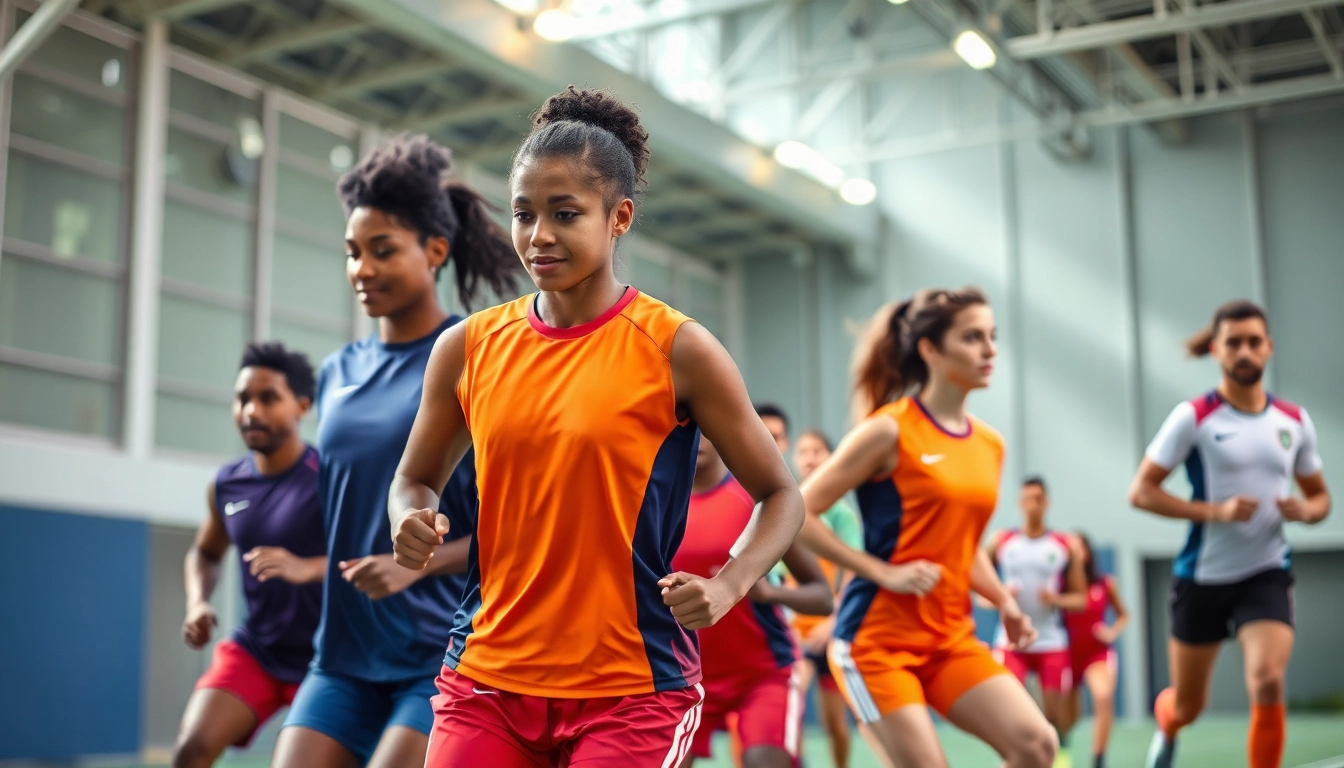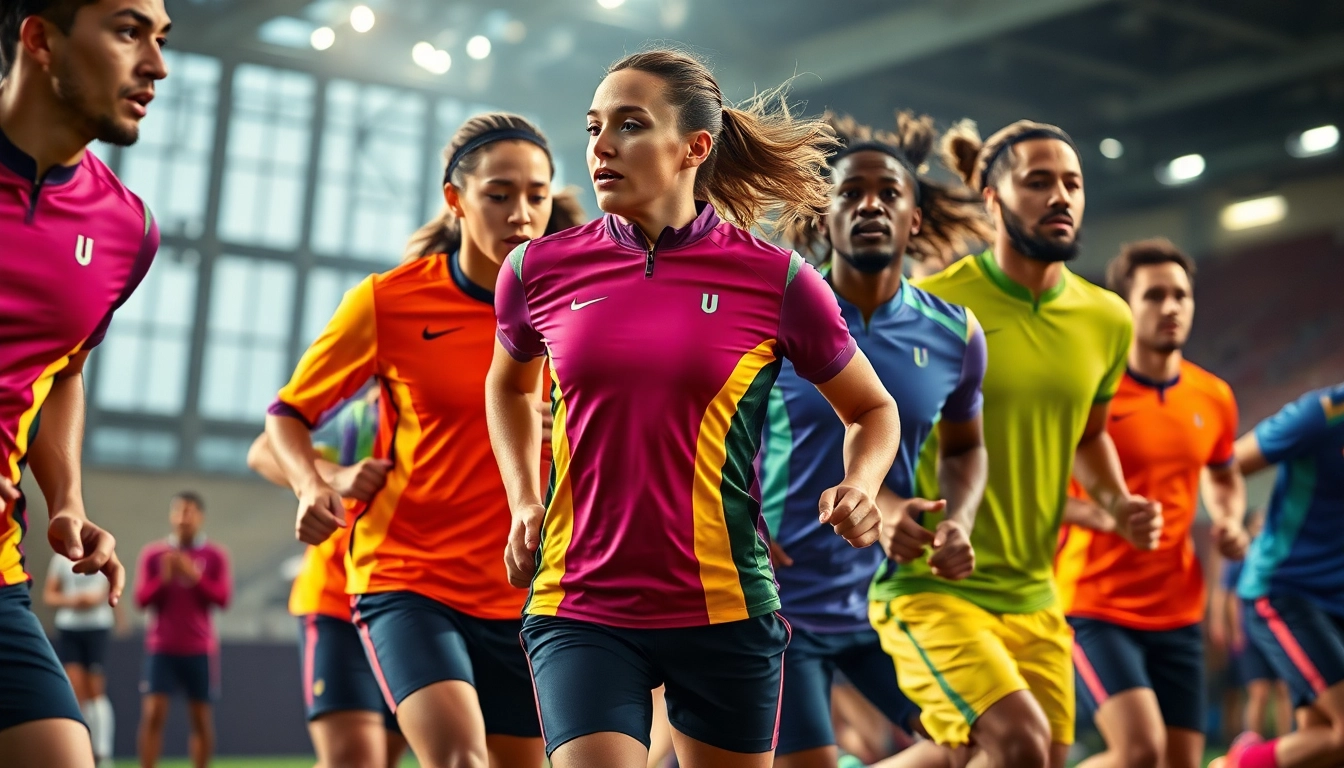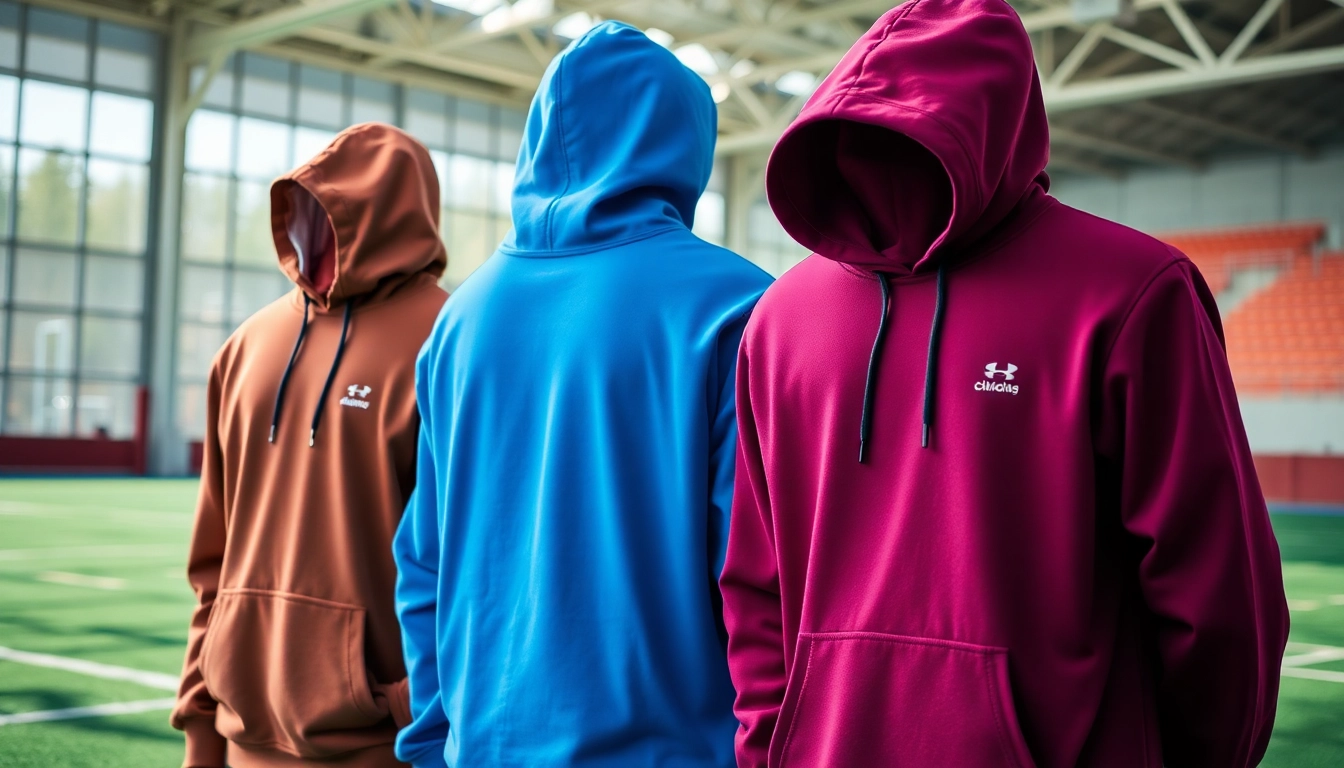Understanding the Importance of Quality Teamwear in Sports Performance
In the competitive world of sports, teamwear plays a pivotal role beyond mere aesthetics. It influences player performance, fosters team spirit, and reinforces a cohesive identity. High-quality Teamwear isn’t just about looking unified; it’s a strategic tool that enhances athletic output and builds psychological confidence among team members. From professional leagues to local clubs, the fabric, design, and fit of teamwear directly impact agility, comfort, and durability, which are all critical for peak performance.
Why Teamwear Is Essential for Team Cohesion and Identity
Teamwear serves as a visual representation of a team’s identity, encapsulating their values, culture, and camaraderie. When players don uniform apparel that aligns with their team’s branding, it fosters a sense of belonging and shared purpose. Such unity can boost morale and motivation, leading to better on-field cooperation and strategic execution. Additionally, consistent team attire minimizes confusion during matches, enhances communication, and projects professionalism, particularly during competitions or promotional events. For organizations, investing in high-quality teamwear signifies commitment and instills pride among team members.
Key Features to Look for in High-Performance Teamwear
Choosing the right teamwear involves assessing several critical features. These include fabric breathability, moisture-wicking capabilities, durability, and flexibility. Advanced textiles such as polyester blends with moisture management technology help athletes stay dry and comfortable, reducing fatigue. Moreover, a good fit is essential; attire should neither restrict movement nor cause discomfort. Reinforced stitching, lightweight construction, and seamless designs often contribute to longevity and comfort. Recognizing these features at the selection stage ensures teams invest in gear that withstands rigorous activity and maintains appearance over time.
Impact of Quality Fabrics and Design on Athletic Performance
Fabric technology has transformed athletic apparel, with innovations aimed at optimizing performance. Moisture-wicking fabrics draw sweat away from the body, preventing chafing and overheating. Compression materials can improve circulation and reduce muscle soreness. The design of teamwear also impacts aerodynamics and movement—ranging from strategically placed ventilation zones to ergonomic tailoring. Strategic color schemes and patterns can boost visibility and team spirit. Well-designed, high-quality fabrics and cutting-edge designs act synergistically to improve focus, endurance, and overall athletic effectiveness on the field.
Designing Custom Teamwear: From Concept to Creation
Steps to Develop Your Unique Teamwear Concept
Embarking on custom teamwear starts with a clear vision. First, define the team’s branding elements—logos, mascots, colors, and typography. Conduct brainstorming sessions with team members and branding experts to develop design concepts that align with your team’s personality. Create mood boards and mockups to visualize the aesthetics. Gathering feedback during this stage ensures that the final design resonates with the team’s spirit. Once settled, prepare detailed specifications for production, including sizing, layout, and special features like sponsor placements or custom trims.
Choosing the Right Materials and Colors for Your Brand
The choice of materials directly affects comfort, performance, and durability. Selecting fabrics like polyester with advanced moisture management ensures freshness during intense activity. Eco-friendly options are increasingly popular for their sustainability benefits. Color selection should reflect your team’s branding and be highly visible on the field. Use contrasting hues for clarity and vibrant shades to energize the team. Consider color psychology—blue for trust, red for passion, green for growth—to reinforce team values visually. Consultation with textile specialists can help identify the best fabrics for your specific sport and climate conditions.
Working with Suppliers for Seamless Customization and Quality Control
Partnering with reputable suppliers is vital for maintaining quality and consistency. Clear communication of your design specifications, deadlines, and quality expectations avoids costly mistakes. Request samples before bulk production to evaluate fabric quality and finishing details. Establish quality control checkpoints during manufacturing—such as inspection of stitching, color accuracy, and fit—to ensure standards are met. A collaborative approach with your supplier facilitates seamless customization, whether it’s adding logos, player names, or unique designs. Efficient logistics management ensures your custom teamwear arrives on time, ready for game day or tournaments.
Production and Delivery: Ensuring Timely and Precise Results
Manufacturing Processes for Durable and Stylish Teamwear
Modern manufacturing employs advanced techniques like digital printing, sublimation, and computerized embroidery to produce vibrant, long-lasting designs. These methods allow for precise detail and customization while maintaining high-quality standards. Fabrics are cut with sophisticated machinery to ensure consistency across large orders. Heat sealing and reinforced stitching ensure durability, especially in stress-prone areas like seams and shoulders. Quality assurance protocols, including fabric inspection and test washes, verify that each batch meets performance and aesthetic expectations.
Managing Turnaround Times and Order Sizes Effectively
Strategic planning is key to meeting deadlines, especially during active sports seasons. Early collaboration with suppliers allows ample lead time for design finalization and sample approvals. For large or recurring orders, establishing a streamlined process — including clear communication channels and defined milestones — optimizes efficiency. Employing flexible manufacturing setups can adapt to fluctuating order sizes without compromising quality. Many suppliers now provide express services and bulk discounts, which are advantageous for teams with tight schedules or budget constraints.
Maintaining Consistency Across Large or Repeated Orders
Consistency is crucial for delivering a professional appearance. Implementing standardized production protocols and detailed templates reduces variability. Maintaining digital records of design files, fabric batches, and color codes ensures repeatability. Periodic quality audits and sample comparisons help monitor ongoing standards. Building long-term relationships with suppliers fosters trust and facilitates smoother reorders, while ensuring each batch aligns perfectly with previous ones.
Maximizing Impact: Branding and Personalization Strategies
Incorporating Logos, Names, and Sponsorships Effectively
Strategic placement of logos and sponsorships enhances visual impact and brand visibility. Logos should be prominent yet balanced, typically on the chest or back for maximum recognition. Embroidered logos offer a premium look and longevity, while heat transfer options provide flexibility for detailed designs. Incorporate player names and numbers with readable fonts aligned with your brand style. Ensure that sponsorship logos do not overpower team branding but complement the overall design harmoniously.
Innovative Customization Techniques for Unique Designs
Advanced customization methods include sublimation printing for all-over patterns, 3D embroidery for textured logos, and reflective materials for safety. These techniques allow for multi-dimensional, eye-catching designs that stand out. Laser cutting and appliqué can add intricate details, while color-changing fabrics introduce fun and functional elements. Using these innovative approaches boosts team morale and leaves a lasting impression in competitions and community events.
Enhancing Team Identity Through Uniforms and Accessories
Beyond core jerseys, accessories like hats, headbands, socks, and bags reinforce team identity. Consistent color schemes and logos across all gear build a unified look. Customized accessories can also serve practical purposes, such as sweat-wicking headbands or reinforced sneakers. Emphasizing branding consistency across apparel and accessories amplifies team recognition and helps foster loyalty among team members and supporters alike.
Measuring Success and Continual Improvement
Collecting Feedback for Future Iterations
Regular feedback from athletes and coaches provides insights into comfort, durability, and aesthetics. Surveys and on-field observations help identify areas for improvement. Incorporating feedback into subsequent orders ensures your teamwear evolves with your team’s needs and preferences. Addressing issues like fabric irritation, sizing inconsistencies, or design elements enhances overall satisfaction and performance.
Monitoring Performance and Brand Recognition
Assessing how teamwear influences on-field performance involves tracking variables like player confidence, comfort, and injury prevention. Additionally, monitoring brand visibility during events—via social media coverage, photographs, and fan engagement—measures the promotional impact. Consistent branding across all gear amplifies recognition, increases sponsorship opportunities, and contributes to a cohesive team reputation.
Adapting Your Teamwear Strategy to Evolving Trends
As fashion and textile technology advance, staying informed about emerging trends can provide a competitive edge. Incorporate sustainable fabrics, smart textiles, or minimalist designs to align with modern aesthetics. Cross-referencing industry innovations and conducting periodic reviews of your apparel strategy keep your team at the forefront. Flexibility to adapt designs and manufacturing processes ensures longevity and relevance of your teamwear program.



